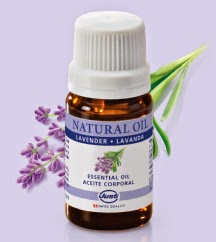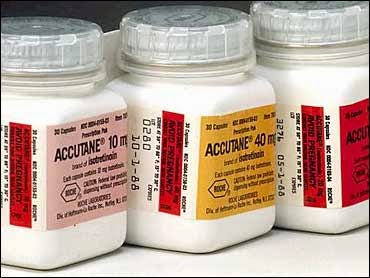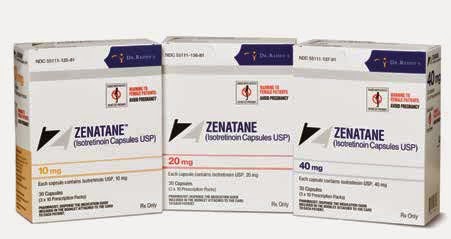Becoming a mother makes you the mother of all children. From now on each wounded, abandoned, frightened child is yours. You live in the suffering mothers of every race and creed and weep with them. You long to comfort all who are desolate.
Sunday, May 11, 2014
Saturday, May 10, 2014
THE BEST DRESSED MET GALA 2014
Hailee Steinfeld in a Prabal Gurung dress and Van Cleef & Arpels jewellery
David Beckham in a Ralph Lauren Black Label suit and Christian Louboutin shoes and Victoria Beckham in a Victoria Beckham dress and Jacob & Co jewellery
Karolina Kurkova in a Marchesa dress and Harry Winston jewellery
Kim Kardashian in a Lanvin dress and Lorraine Schwartz jewellery and Kanye West in Lanvin
Frank Ocean in a Givenchy suit, Forevermark jewellery, Hoorsenbuhs jewellery, and Jacob & Co jewellery
Rihanna in a Stella McCartney dress, Jacob & Co necklace, Cartier rings, and Dionea Orcini rings
Emma Stone in a Thakoon dress and Tod’s bag and Andrew Garfield in a Band of Outsiders suit and Christian Louboutin shoes
Sarah Jessica Parker in an Oscar de la Renta and Fred Leighton jewellery
Karen Elson in a Zac Posen dress and Van Cleef & Arpels jewellery
Gisele Bündchen in a Balenciaga dress and Fred Leighton jewellery and Tom Brady
Friday, May 9, 2014
HOW TO CURE PIMPLES - PART III
Using Home Remedies
Tea tree oil is one of the best natural spot treatments available. Extracted from the leaves of the Australian melaleuca alternifolia plant, tea tree oil possesses powerful antibacterial, antifungal and antiviral properties which effectively combat the pimple-causing bacteria on the skin. Simply apply a drop or two of pure tea tree oil onto a clean q-tip and dab directly onto the offending pimple. Do this twice and day and the pimple should be gone in no time
Tea tree oil is an essential oil and therefore extremely concentrated. If you overuse the oil or apply it undiluted to unaffected skin, your skin may become dry and irritated, so use sparingly, and only when needed.
One study found that tee tree oil was just as effective at combating pimples as its chemical-laden counterpart benzoyl peroxide. The tea tree oil did take slightly longer to take effect, but also produced fewer negative side effects.
Pimples often make their presence felt by becoming red and inflamed, so what better way to cool off an angry pimple than with some soothing ice? The ice reduces inflammation and redness, significantly improving the appearance of the pimple. Simply wrap an ice cub in some paper towel or a clean cloth and press gently against the pimple for a minute or two.
An additional tip is to make ice cubes from strong green tea and use these on the pimples instead. In addition to its anti-inflammatory and antibacterial properties, studies have shown that a certain antioxidant green tea can actually help to reduce sebum production.
The notion of applying toothpaste on problem pimples has been around for years, and while it may not be the most effective spot treatment available, it will do in a pinch. Toothpaste contains ingredients such as baking soda and hydrogen peroxide which dry out pimples, helping them to go away faster.
Opt for an all-white, fluoride-free toothpaste, if possible, and make sure that you apply it directly onto the pimple, rather than on the surrounding skin, as other ingredients in the toothpaste may irritate and even burn the skin
Honey is an amazing natural healing product, whose antibacterial, antiseptic and hydrating properties make it an excellent choice for fighting pimples, particularly if you have sensitive skin. Manuka honey is the best bet for calming angry pimples, but raw honey will also work well.
You can apply the honey as a spot treatment, or use it as a face mask, applying it all over the face on clean, slightly damp skin. As honey is non-irritating, you can leave it on for as long as you like.
One point that must be made is that honey, like many other home remedies, works to clear up pre-existing pimples (due to its anti-bacterial nature) but will do little to prevent future pimples from popping up (especially those caused by hormonal imbalances).
Lavender essential oil, famous mainly for its calming and soothing properties, can also be used as a spot treatment for pimples, much like tea tree oil. Lavender oil is often used on burns, as it contains healing properties which can also be beneficial for pimples. In addition, lavender oil contains powerful antibacterial agents, which help to cleanse pores, minimizing the appearance of pimples.
To use, apply a dab of undiluted oil directly onto the pimple using a q-tip. Take care not to get any on the surrounding skin, as lavender oil can be irritating on the skin when undiluted.
Use tomato. Tomatoes are a handy home remedy for pimples, as most people tend to have a tomato or two floating around their kitchen.
Tomatoes are packed with vitamins A and C which, as mentioned above, are prime pimple-busting material. Tomato juice is also a natural astringent, which causes the surface of the pimple to contract and shrink.
Tomatoes are packed with vitamins A and C which, as mentioned above, are prime pimple-busting material. Tomato juice is also a natural astringent, which causes the surface of the pimple to contract and shrink.
To use, simply cut up a fresh tomato and rub the juice from a slice directly onto the target pimple. Do this twice a day and you should begin to notice an improvement.
Applying fresh lemon juice to pimples is one of most popular home remedies out there. Lemons contain high quantities of vitamin C, along with citric acid which helps to both exfoliate and dry out pimples. Lemon juice also contains bleaching agents which can significantly reduce the redness of the pimples. A little fresh lemon juice can be applied directly to each pimple before bed and left on overnight.
Lemon juice should not be applied to your skin during the day, unless you plan on staying indoors. This is because the juice makes your skin photosensitive, increasing the risk of sun damage.
As with many other home remedies, the lemon juice should only be applied directly on to the pimple, and not on the surrounding skin. This is due to the chance of the citric acid in lemons burning the skin.
The technical name for aspirin is acetylsalicylic acid, which is closely related to salicylic acid, a well-known and popular acne treatment. Aspirin is an anti-inflammatory which can help to reduce the size and redness of pimples, when applied topically. All you need to do is crush up an aspirin tablet and add a drop or two of water to form a paste, which can then be applied directly onto each pimple.
Alternatively, you can make a face mask by crushing up five or six aspirin tabs and adding enough water to make a paste. This can be applied all over the face and left on for about ten to fifteen minutes, before washing off.
Tuesday, May 6, 2014
HOW TO CURE PIMPLES - PART II
Using Creams, Medications and Treatments
If you suffer from persistent pimples, it will usually be necessary to do a little more than simply keep your face clean and eat healthily. Luckily, there are a whole plethora of over-the-counter (OTC) creams which can work wonders for clearing up pimples and prevent more from popping up in their place. These creams are usually applied directly onto pimples and will, in most cases, lead to a significant improvement in the skin's condition within 6 to 8 weeks. The most common active ingredients found in these creams are:
Benzoyl peroxide.
Benzoyl peroxide kills bacteria on the surface of the skin, while also slowing down the production and build-up of oil in the pores. It also works as a peeling agent, helping the skin to rejuvenate itself. Benzoyl peroxide can have a drying, irritating effect on the skin, so you should begin with the lowest available concentration.
Benzoyl peroxide kills bacteria on the surface of the skin, while also slowing down the production and build-up of oil in the pores. It also works as a peeling agent, helping the skin to rejuvenate itself. Benzoyl peroxide can have a drying, irritating effect on the skin, so you should begin with the lowest available concentration.
Salicylic acid.
Salicylic acid is another ingredient which helps to kill pimple-causing bacteria. It also helps to break down blackheads and whiteheads which can develop into pimples once infected. In addition, salicylic acid helps skin to shed old, dead layers, preventing pores from becoming blocked and allowing new skin cells to form.
Salicylic acid is another ingredient which helps to kill pimple-causing bacteria. It also helps to break down blackheads and whiteheads which can develop into pimples once infected. In addition, salicylic acid helps skin to shed old, dead layers, preventing pores from becoming blocked and allowing new skin cells to form.
Sulfur.
Sulfur contains anti-bacterial properties and helps to break down whiteheads and blackheads, preventing them from becoming infected and forming pimples.
Sulfur contains anti-bacterial properties and helps to break down whiteheads and blackheads, preventing them from becoming infected and forming pimples.
Retin-A.
Retin-A contains an acidic form of vitamin A,
known as all-trans retinoic acid, which operates like a chemical peels, exfoliating the skin and unblocking clogged pores.
Retin-A contains an acidic form of vitamin A,
known as all-trans retinoic acid, which operates like a chemical peels, exfoliating the skin and unblocking clogged pores.
Azelaic acid.
Azelaic acid minimizes the appearance of pimples by preventing the build-up of oil and reducing inflammation and bacterial growth. It is especially effective for people with darker skin tones
Azelaic acid minimizes the appearance of pimples by preventing the build-up of oil and reducing inflammation and bacterial growth. It is especially effective for people with darker skin tones
Some people find that OTC creams are not quite strong enough to combat stubborn pimples. In this case, it is possible to ask your doctor to prescribe a stronger topical treatment which might just do the trick.
Most prescription creams contain active ingredients derived from vitamin A. Examples include products such as tretinoin, adapalene and tazarotene. These creams work by encouraging cell turnover and by preventing hair follicles from becoming clogged.
There are also a number of prescription antibacterial creams, which work by killing bacteria on the surface of the skin.
In cases of moderate to severe acne, your doctor may recommend combining the application of a topical cream with a course of oral antibiotics. These help to reduce inflammation along with the growth of bacteria. Antibiotic treatments will usually last between four to six months, although you should begin to notice an improvement in your skin within about six weeks.
Unfortunately, many people nowadays easily build up a resistance to antibiotics, so this form of treatment will not always work effectively.
Some antibiotics (such as tetracyclines) will reduce the effectiveness of oral contraceptives, so women should use a back up form of contraception when following a course of antibiotics
If all else fails and severe acne persists, your dermatologist may advise isotretinoin treatments. Isotretinoin is closely related to vitamin A and works by reducing the body's production of sebum oil and by shrinking the oil production glands. A course of isotretinoin usually lasts for about 20 weeks, during which time the patient must be closely monitored, due to the drug's large number of potential side effects.
When taking isotretinoin, acne may become worse before it gets better. This flare-up will usually only last for a couple of weeks but can sometimes last for the duration of the treatment.
Some of side effects associated with isotretinoin treatments include dry skin and eyes, dry, cracked lips, sensitivity to sunlight, and more uncommonly, headaches, hair loss, mood changes and depression.
This treatment has been linked with severe birth defects, so it cannot be prescribed to pregnant women or those who are trying to conceive. As a result, women will be asked to take a pregnancy test before being prescribed this medication
Since many pimple problems are related to hormonal imbalances, oral contraceptives can be a great way of regulating hormone production and reducing breakouts in women - particularly those related to the menstrual cycle. Oral contraceptives which contain a combination of norgestimate and ethinyl estradiol are generally the most effective.
Oral contraceptives can in rare cases produce serious side effects such as blood clotting, high blood pressure and a higher risk of heart disease, so make sure to discuss this option thoroughly with your doctor before pursuing it
There are many treatments available at spas and skin clinics, which can significantly improve the appearance of pimple prone skin, when used in combination with some of the above-mentioned treatments. They can be a little on the pricey side, but can produce more long term results than other treatments and even help to prevent and reduce scarring. Such treatments include:
Laser therapy.
Laser therapy works by penetrating deep within the skin and damaging the oil glands that produce sebum - an excess of which leads to pimples.
Laser therapy works by penetrating deep within the skin and damaging the oil glands that produce sebum - an excess of which leads to pimples.
Light therapy.
Light therapy targets the acne-causing bacteria on the surface of the skin, reducing inflammation and improving the texture of the skin.
Light therapy targets the acne-causing bacteria on the surface of the skin, reducing inflammation and improving the texture of the skin.
Chemical peels.
A chemical peel burns the surface of the skin in a controlled fashion, causing the top layers to peel away and revealing the fresh, new skin underneath.
This treatment is particularly good for getting rid of any marks or scars left behind after the pimples themselves have been cleared away.
A chemical peel burns the surface of the skin in a controlled fashion, causing the top layers to peel away and revealing the fresh, new skin underneath.
This treatment is particularly good for getting rid of any marks or scars left behind after the pimples themselves have been cleared away.
Subscribe to:
Posts (Atom)























































